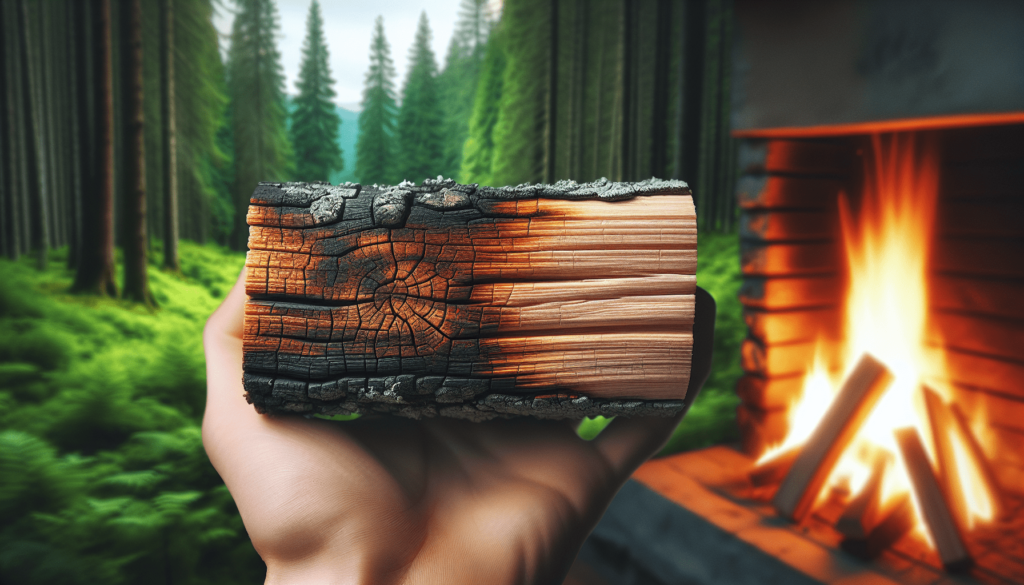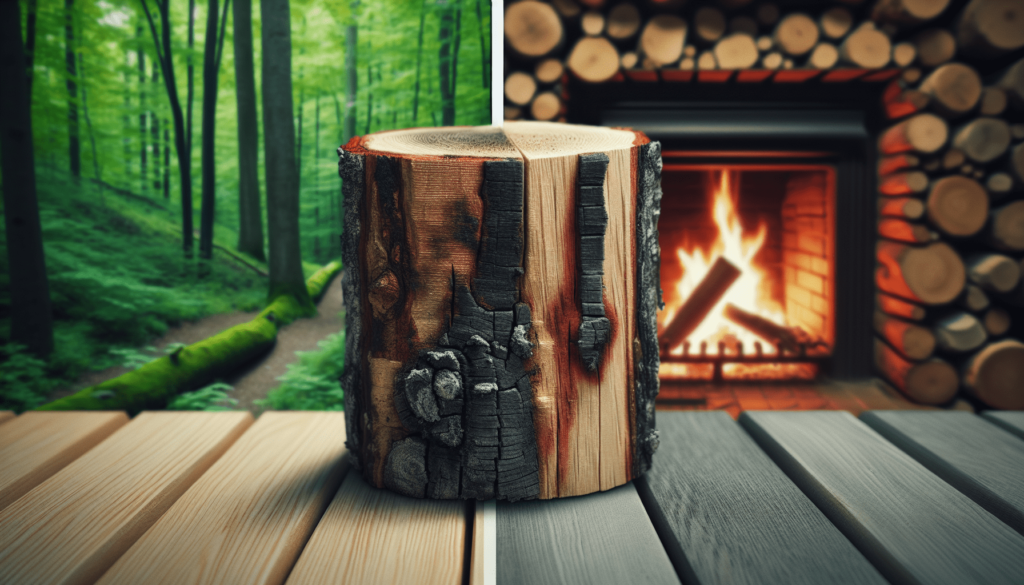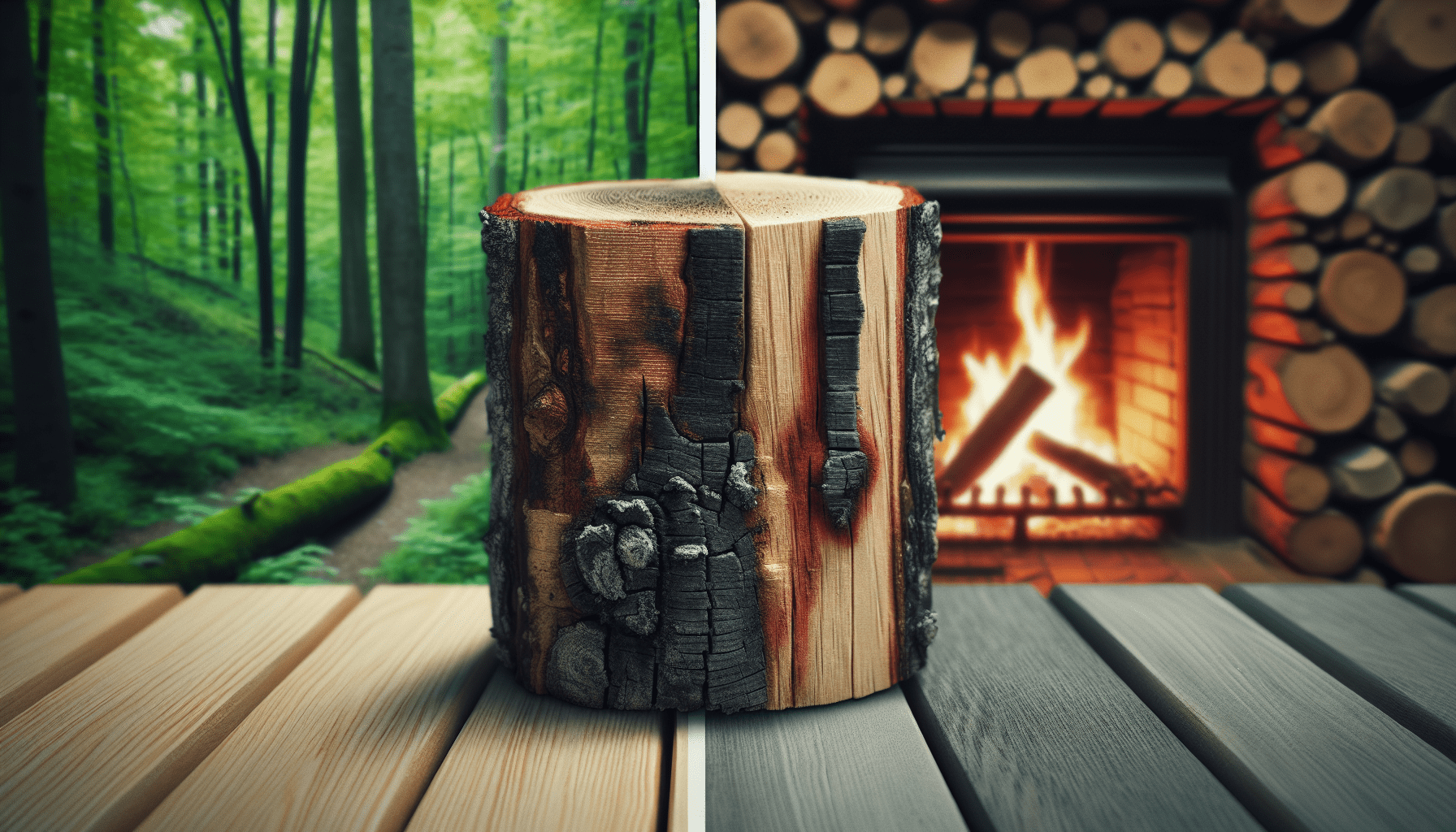When it comes to cozying up by the fire, you might wonder about tossing in some leftover treated wood from your latest project. But is treated wood safe to burn? In this article, I’ll dive into the risks and reasons why burning treated wood isn’t just a bad idea—it’s potentially dangerous. From releasing harmful chemicals into the air to the impact on your health and the environment, we’ll cover everything you need to know to make safer choices for your next bonfire. So, let’s get into the nitty-gritty and find out why that piece of treated wood should stay out of the flames. Have you ever stared at a pile of leftover lumber from a recent home improvement project and wondered if you could just toss it into the firepit? I have. You know, I look at those pieces of wood, perfectly sized for a quick and cozy bonfire, and the temptation is intense. But then I remember something lurking at the back of my mind—some ghost of advice past—telling me to think twice about burning treated wood. And this is where our journey begins. Welcome to my deep dive into the eternal question: “Is treated wood safe to burn?”
What Is Treated Wood?
To kick things off, let’s get an idea of what treated wood actually is. Treated wood is essentially lumber that’s been infused with chemicals to make it more resistant to pests, fungi, and weather conditions. It sounds like a dream come true for outdoor projects, right? Your backyard deck or fence will thank you for it. But there’s a lot more under the surface.
Types of Treated Wood
Not all treated wood is created equal. Here are a few of the common types you’ll encounter:
| Type | Treatment Used | Common Uses |
|---|---|---|
| Chromated Copper Arsenate (CCA) | Arsenic and chromium-based compounds | Older decks, fences |
| Alkaline Copper Quaternary (ACQ) | Copper and quaternary ammonium compounds | Modern decks, outdoor furniture |
| Borate-treated | Borates (boron compounds) | Indoor applications |
| Creosote-treated | Coal-tar derivatives | Railroad ties, marine pilings |
You might be wondering why you should care about these various types. Well, each comes with its own bouquet of chemicals, and some of these can be pretty nasty when set alight.
Why Burning Treated Wood is a Temptation
Let’s face it: life can be a game of convenience. And when it comes to disposing of leftover construction materials, burning seems like an effortless solution. There’s something primal and satisfying about a good fire, and watching stuff disappear into flames can feel like accomplishing something. Who doesn’t love that? Sort of like washing dishes; there’s a finality to it.
Cost Efficiency
Throwing wood into a firepit saves the hassle and any expense of arranging a proper disposal. You get warmth, maybe even some marshmallows roasted over an open flame, and you reclaim some space in your yard or garage. Totally winning, right?
Laziness
Yep, I said it. Sometimes, we’re just lazy. There’s no harm in admitting it. Taking wood to a landfill or recycling center involves planning and, worst of all, effort. Letting it go up in smoke can seem appealingly easy by comparison.

The Risks Involved
Now that we’ve acknowledged the allure, let’s delve into why scientists and environmentalists (and probably your mother) are so dead-set against the idea. Spoiler alert: it’s not good.
Chemical Concerns
Remember that list of chemicals I mentioned earlier? They don’t disappear when the wood goes up in flames. Burning treated wood can release those chemicals into the air, and trust me, you don’t want to breathe them in. Let’s break down the primary culprits:
| Chemical | Health Risks |
|---|---|
| Arsenic | Carcinogenic, causes respiratory issues |
| Chromium | Various cancers, respiratory issues |
| Copper | Gastrointestinal distress, liver and kidney damage |
| Boron Compounds | Irritant, affects reproductive health |
| Creosote | Skin, eye, and respiratory irritation, carcinogenic |
Environmental Impact
It’s one thing to poison yourself; it’s another to mess with Mother Nature. Releasing these chemicals into the air contributes to pollution and can affect local wildlife and even water sources, should ash make its way into streams and rivers.
Potential Legal Issues
In some places, burning treated wood isn’t just frowned upon—it’s outright illegal. Environmental regulations can result in hefty fines if you get caught polluting the air with all those chemicals.
Alternative Ways to Dispose of Treated Wood
Okay, so setting old lumber ablaze is a bad idea. I get it, you get it, everyone gets it. But what can you do instead?
Recycling and Reuse
Taking old wood to a recycling facility is a responsible option. Some places specialize in recycling treated wood and will ensure that it’s disposed of or repurposed in an environmentally safe way.
Donations
If the wood is still in good shape, you can see if local community projects or schools could use it. Not only are you getting rid of the wood responsibly, but you’re also helping someone out. That’s a win-win situation.
Professional Disposal Services
There are waste disposal companies that deal specifically with treated wood. They may charge a fee, but they take all the guesswork out of it. Plus, they’re well-versed in meeting environmental regulations.

Real-World Scenarios
Let’s look at a few real-life examples here to ground our conversation in reality. One friend of mine decided to have a little bonfire with some leftover deck wood. Within minutes, the backyard smelled like some sort of apocalyptic smokehouse, and another neighbor called the fire department. Twenty minutes later, he was getting a stern lecture from a fireman who had clearly dealt with this kind of stuff before.
Disaster Stories
-
The Smell of Trouble: Picture it. You’re enjoying a campfire, and suddenly there’s a waft that smells like burning chemicals. It’s not the cozy night you envisioned; instead, it’s an olfactory nightmare.
-
Health Issues: My uncle went the burning route for some old fence posts treated with creosote. The result? A trip to the ER with a respiratory issue severe enough to scare the living daylights out of him.
Happy Endings
On a happier note, another friend took his leftover treated wood to a recycling facility. Not only did he avoid any health or legal issues, but he also felt pretty smug about his eco-friendly choice. And as we all know, there’s nothing better than self-righteous eco smugness to fuel a conversation.
Conclusion: The Final Verdict
So, is treated wood safe to burn? A thousand times no. From a health perspective, you don’t want those toxins in your lungs. When it comes to the environment, you’d be contributing to pollution. And let’s not forget the potential legal ramifications, as well as the simpler, more humane alternatives available for disposal.
What To Do Moving Forward
- Think Before You Burn: Always consider the type of wood before deciding to burn it.
- Be Informed: A little research can save you a lot of trouble. Know your wood and your local regulations.
- Choose Responsibly: Take the extra steps to dispose of treated wood responsibly. Future you (and probably your neighbors) will thank you.
Was it as much of a slog through information as you anticipated? Surprisingly, no. It was quite the woodsy adventure. But now that we know better, let’s leave the burning of treated wood to those better suited—maybe those hypothetical agents in hazmat suits. In the meantime, I’ll stick to my trusty, natural, untreated firewood for those backyard bonfires. And perhaps you will too.
Who knew that treated wood could spark such a journey?

